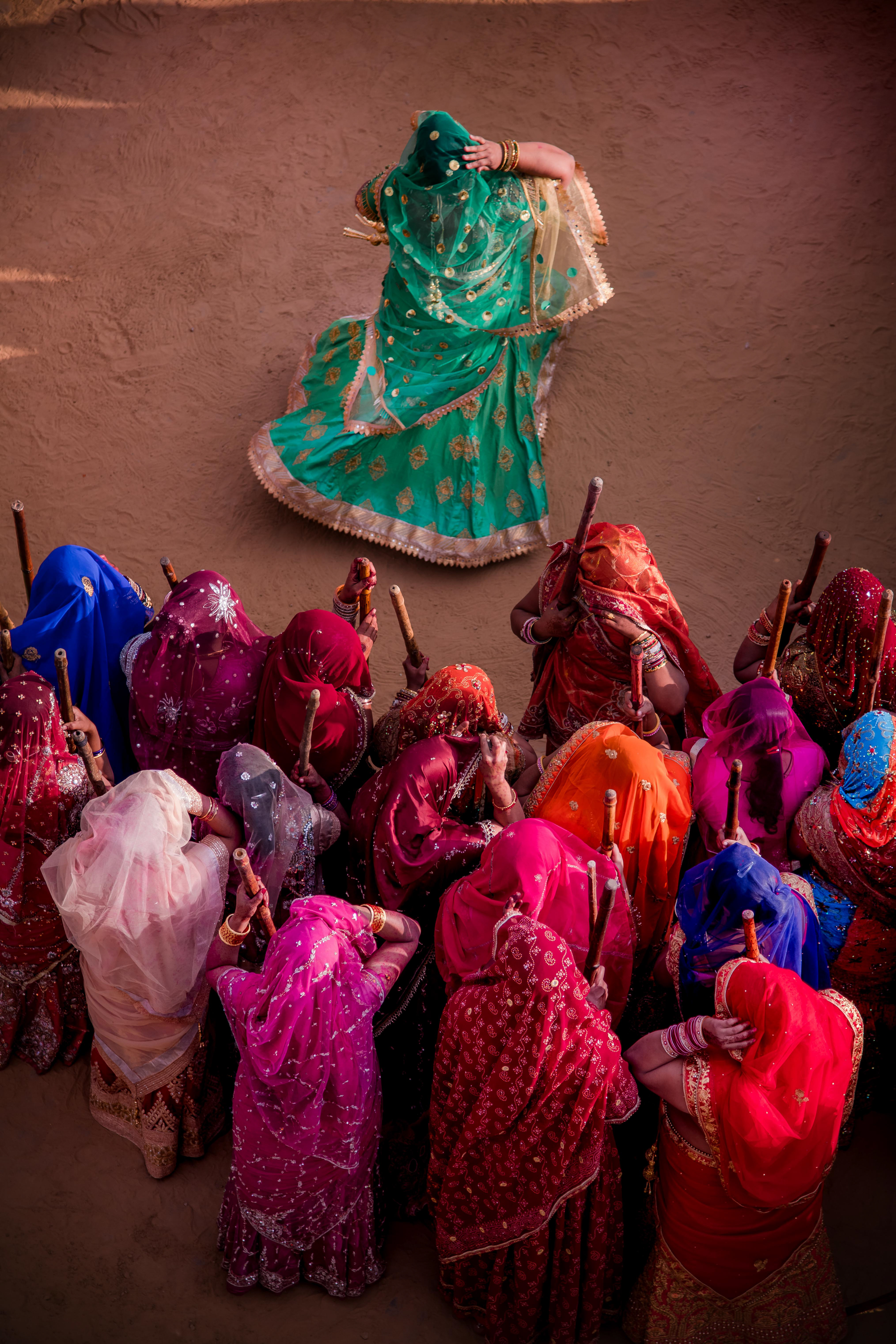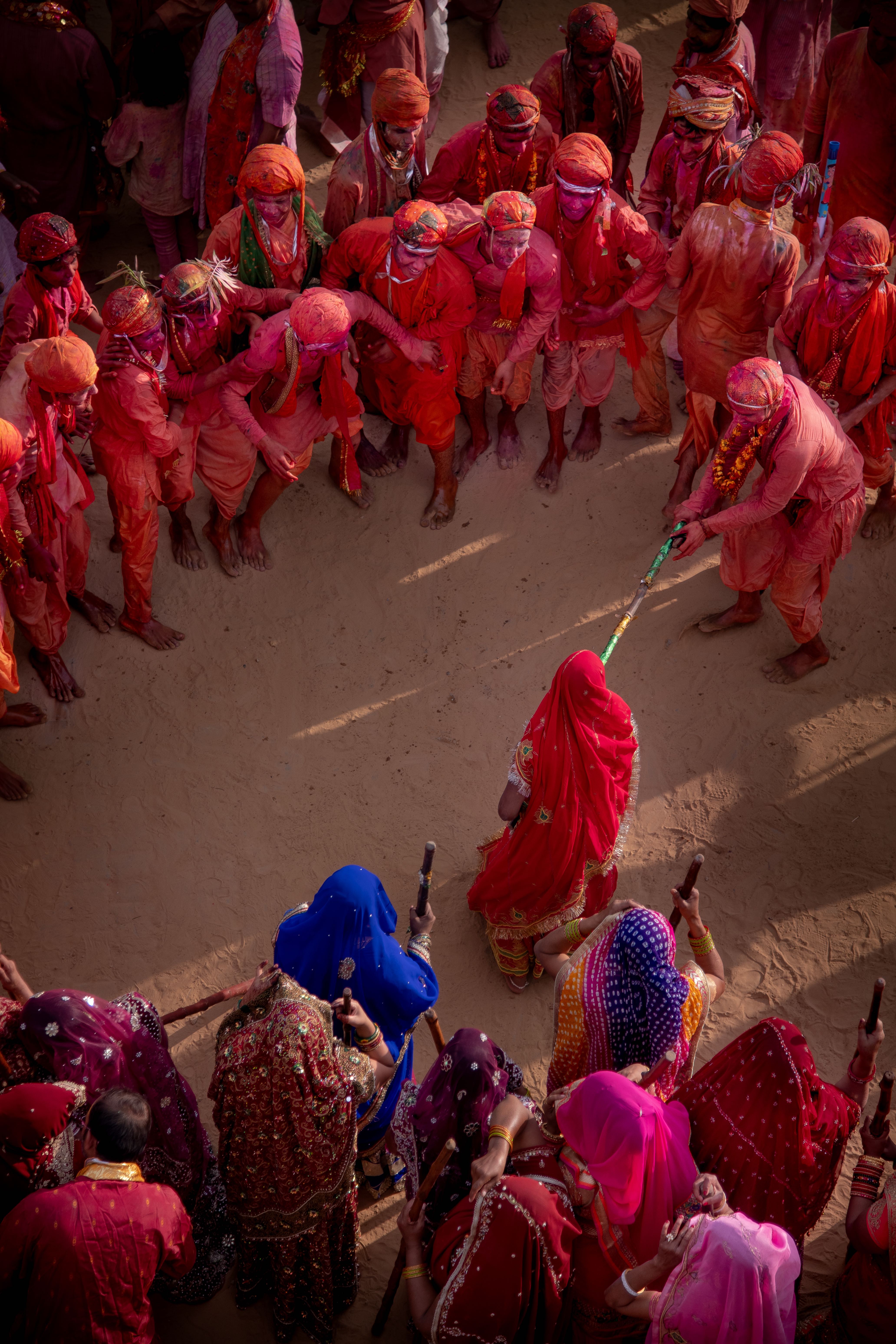Thousands of people had gathered in a courtyard big enough to ideally hold only a couple of hundreds—all of us dusted in a spectrum of coloured powders ranging from pink to purple to yellow. Women in colourful sarees pulled low over their faces, and with big wooden sticks in their hands, mock-charged at an army of men crouching under shields. The men, in return, spouted provocative statements that might have been unacceptable in any other circumstance. I am not sure what the women really felt but they continued to beat up the men playfully while everyone around cheered, holding their phones up to make pictures but frantically trying to save them from being doused with water or colour as they did so.
I was in the small town of Barsana in Mathura, Uttar Pradesh, and this is the scene from a couple of days ago as part of an unconventional celebration of Holi—a Hindu spring festival that signifies the arrival of harvest season and one symbolic of the triumph of good over evil. Filling your fists with coloured powder, consuming cannabis-based bhaang ki goli and playing with pichkaris (water guns) are common practices across the country on the day of Holi, which falls tomorrow. But out here is celebrated Lathmar Holi ( lathmar is literally ‘beating with sticks’). Carrying on a tradition rooted in mythology involves men singing provocative songs and hurling cheapass pick-up lines at the women, who are then meant to respond by beating them up with sticks. This is meant to be a recreation of an ancient Hindu legend. According to it, Lord Krishna (a widely revered deity in Hinduism) came from Nandgaon to play Holi with his love interest Radha in Barsana, and teased her friends who were gopis (cowherds), who retaliated by chasing him away with their sticks.
Videos by VICE
The tradition has stuck around ever since, and this year was also extended to two phases within a period of six days. While the vibe I witnessed was one of revelry, I know that it’s not all fun and games. Under the garb of ‘bura na mano, Holi hai (don’t get upset, it’s Holi)’, the festival has led to incidents of molestation in the past. Out here too, I could see people getting awkwardly close to tourists visiting the festival, and then saying “Radhe Radhe!” as a way of leaning on religion to mask their intentions. Even as a man, I was told to be accompanied with friends instead of going solo. This whole culture of provocative ‘teasing’ is questionable, but runs rampant in the spirit of Holi. For the women living there, this might have been internalised, and is part of yet another tradition that must not be questioned.
Despite its darker aspects though, the good part about this celebration is that it is all-inclusive. Even in a small town like Barsana, people of all genders, classes and castes are welcome to take part in the festivities, making it an important exercise in inclusion. Take a look.









Follow Aurobindo Sengupta on Instagram.
More
From VICE
-

Screenshot: Larian Studios -

Collage by VICE -

Screenshot: Electronic Arts -

Photo by SimpleImages
